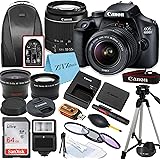Our Natural House
If you are a regular reader you know my wife and I are building a natural building out of straw-bales, earthen plasters, and sustainable harvested woods. The latest rendering of the house looks something like the image below. We’re planning to do grid-tied solar power because we feel obligated to not only use the sun to power our home but to share any excess with the grid. Without going into a lot of detail grid tied systems can not only reduce your carbon foot-print but can reduce your next-door-neighbors as well because they will be the recipients of your extra power due to proximity.
While grid tied is great that means if the grid suffers a power-outage we’re still out even though we could be producing our own. I’d love to have a bypass for when that happens but I’m really not keen on housing a bunch of batteries that cost quite a bit, are not too environmentally sound, and that will go bad in just a few years anyhow (even if we never have an outage).
How Much Power Do We Need To Store?
Before figuring how much capacity we need to know how much we’ll use. I’m not an electrical engineer, I’m not any kind of engineer really but I know we need power for 3 things – lights, refrigeration, and computing. We’re building a masonry stove so heating won’t be an issue and neither will cooking as the stove will allow us to bake in it and that’s good enough so we won’t starve.
If we have a deep-freeze freezer and a typical refrigerator those will both likely draw at least 2 kw per day – that’s a lot on it’s own so we’re looking at only adding some small emergency LED lights that shouldn’t need more than a few hundred watts .
In addition to that (if feasible) we’d like power for our home network drives and modem so we can work (assuming we have an internet connection) and to charge laptops and cell phones (though not all at once). Since we both work from home being able to keep connected to the internet or at least to our home network is somewhat important.
Storing Energy Without Batteries
So my headline here – storing energy “without batteries” is a bit of a misnomer but I chose it because so many people think of batteries strictly as the chemical batteries we’ve become so used to and forget that there are other types of batteries like thermal batteries, hydro-batteries, and mechanical batteries (spring types in particular). Batteries are any means of storage and we’ve got a few choices that we’re still exploring.
Hydro-storage
The first choice seems like the most conventional and easy to do (sort of). That is a hydro-battery. We are planning to have a swimming pond down the hill from the house but if we made room for one above the house too that would allow us to pump water to it while the sun is shining (via a solar panel) which would not need to run consistently and then add a pipe and small turbine on the path to the lower pond which we could switch open when the power goes out. This would probably require 3 pipes between the ponds though – 1 for the pumping of water to it, 1 for the normal flow-back (sans-turbine), and 1 with the turbine. We could probably eliminate needing 3 if we added a clutch on the turbine but I’m no engineer so I’ve not really worked it all out.
In this scenario the amount of power would be dependent on the turbine’s output (though the speed of the flow of the water also matters) and the length of time that we’d have power would depend on how much water we could draw (the total volume of water we could take without totally draining the pond).
We could dig a fairly deep pond to allow us to hold quite a bit of water in the upper pond but the exact volume and the amount of time it takes to drain via the turbine pipe would all need to be factored in.
Canon EOS Rebel T5i 18.0 MP CMOS Digital SLR with 18-55mm EF-S is STM Lens
Now retrieving the price.
(as of November 18, 2025 01:08 GMT -05:00 - More infoProduct prices and availability are accurate as of the date/time indicated and are subject to change. Any price and availability information displayed on [relevant Amazon Site(s), as applicable] at the time of purchase will apply to the purchase of this product.)




